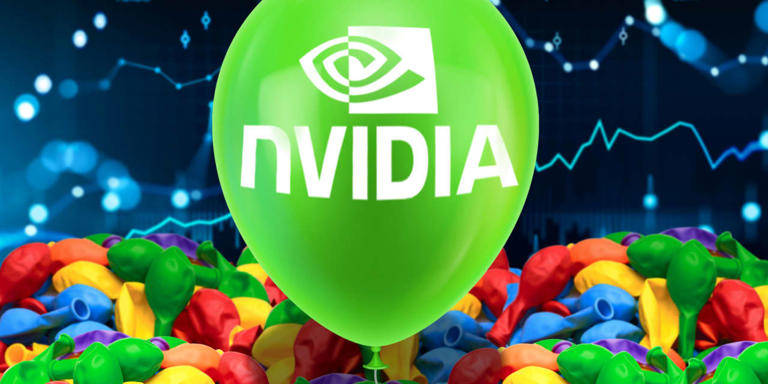The current state of the stock market in 2023 presents a dichotomy where a handful of mega-cap companies are driving substantial gains, contrasting sharply with broader market challenges and economic uncertainties.
Kevin Gordon, senior investment strategist at Charles Schwab, emphasizes that the market’s narrative at the mega-cap level is primarily driven by momentum. Companies like Apple Inc. and Nvidia Corp. have been standout performers, with Apple’s recent rally fueled by its ambitious “Apple Intelligence” initiative and Nvidia’s strong performance in the artificial-intelligence chip sector. These firms have not only bolstered their market valuations but also intensified competition for the title of the most valuable company, frequently jostling with other tech giants like Microsoft Corp.
However, beneath the surface of these headline-grabbing gains lies a less buoyant reality for many other stocks. The S&P 500 and Nasdaq Composite indices, weighted heavily toward market capitalization, have surged impressively in 2023, posting year-to-date gains of 13.9% and reflecting the dominance of mega-cap stocks. In contrast, the equal-weighted version of the S&P 500, which treats all stocks equally regardless of their size, has struggled, gaining only 4.4% for the year. This disparity underscores the concentration of market gains in a few select stocks, skewing overall market performance metrics.
Adding to the complexity, the Dow Jones Industrial Average, a price-weighted index that reflects a more traditional industrial base, has lagged behind with a modest 2.4% year-to-date gain. This divergence in performance metrics raises concerns about market breadth—the number of stocks participating in market gains—which is crucial for sustained market health. Mark Hackett of Nationwide notes that despite record highs in the S&P 500, less than half of its constituent stocks are currently trading above their 50-day moving averages, indicating a lack of broad-based participation in the rally.
Historically, such concentrated market rallies have often preceded periods of market correction or bearish sentiment, as witnessed in previous cycles. While this pattern does not guarantee a repeat, it serves as a cautionary signal for investors and market analysts alike. Gordon warns that sustained divergence between the performance of mega-cap leaders and the broader market’s performance could indicate underlying market fragility.
Economic indicators also play a significant role in shaping market sentiment. Despite robust employment figures, recent revisions to first-quarter GDP growth have tempered economic optimism, suggesting a possible “soft patch” in economic recovery. Signs of labor market normalization post-COVID further underscore cautious economic sentiment, particularly impacting cyclical sectors like energy and financials, which have seen recent declines.
Looking forward, Gordon suggests that the market faces a critical juncture. Having transitioned from a phase of aggressive cost-cutting, markets are now poised for renewed focus on revenue growth. The sustainability of current market levels will depend on broader participation across sectors and sustained economic resilience. Should market breadth continue to erode and economic conditions fail to support growth expectations, vulnerabilities to a market correction may increase.
In summary, while mega-cap technology companies propel headline indices to new highs, the underlying market dynamics reveal broader challenges and economic uncertainties. The juxtaposition of robust performance by a few giants against market breadth struggles underscores the complexity and potential fragility of current market conditions, warranting a cautious approach from investors and market participants alike.
